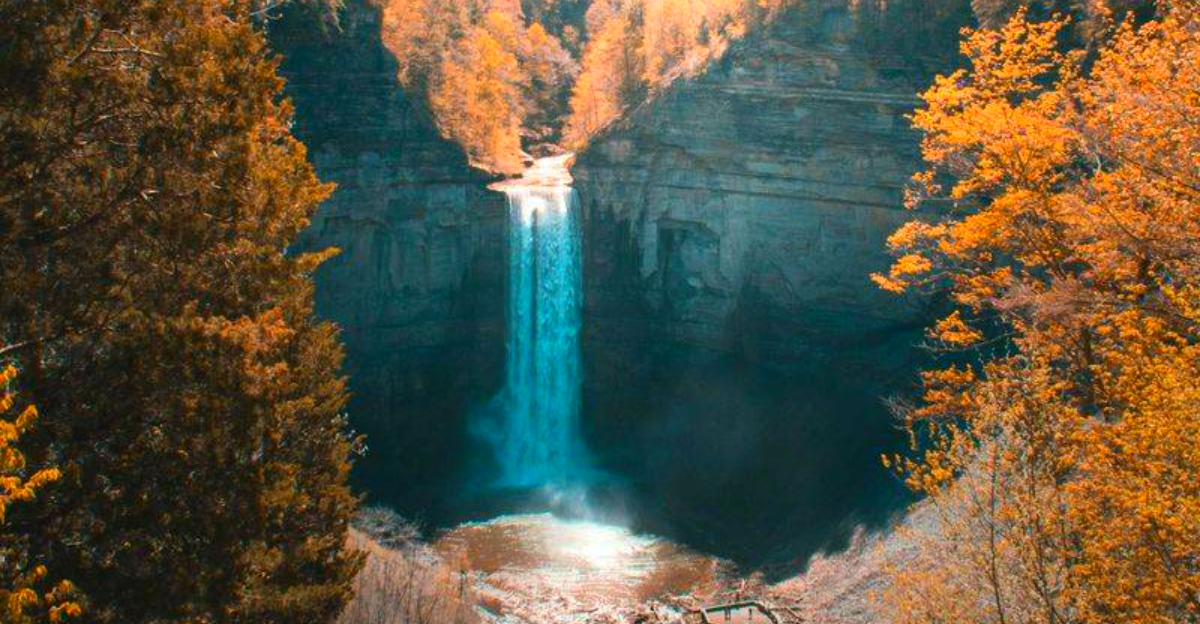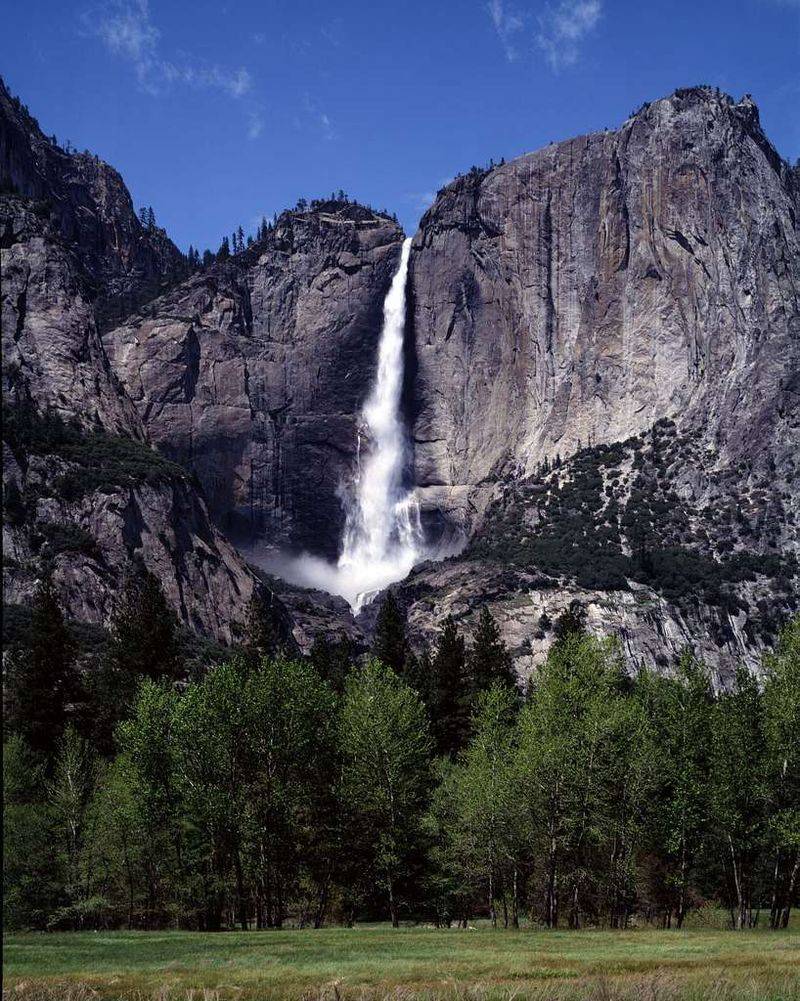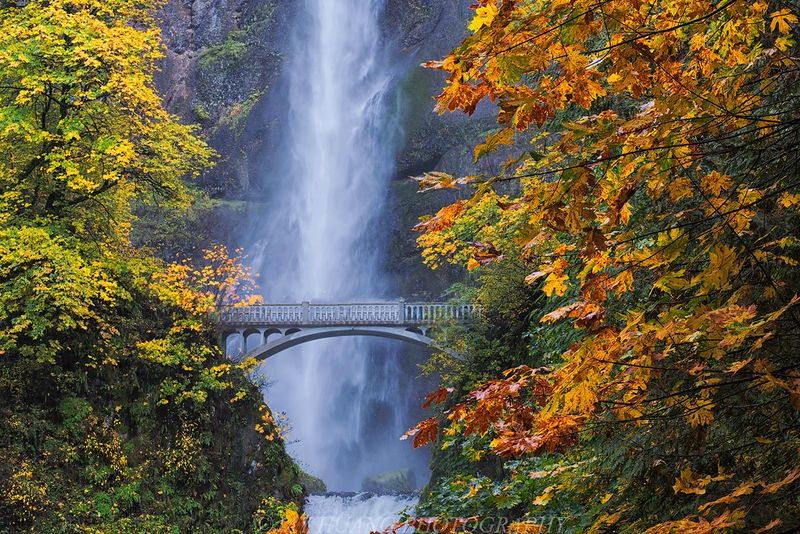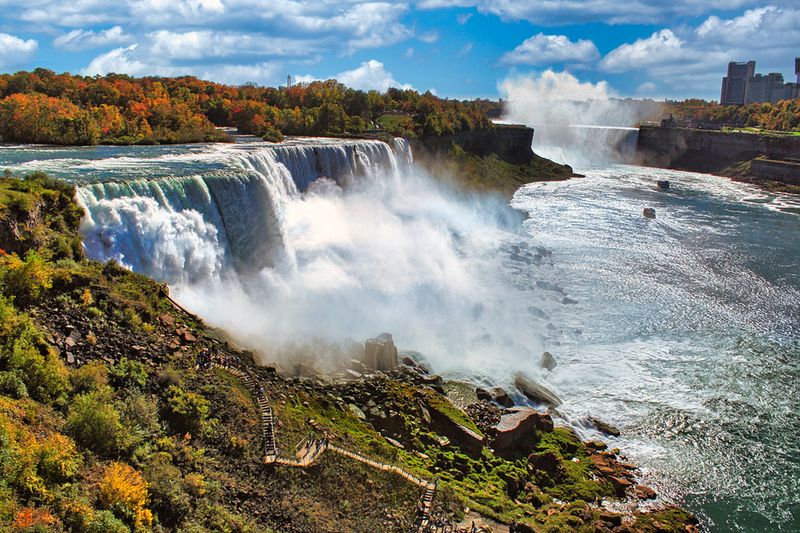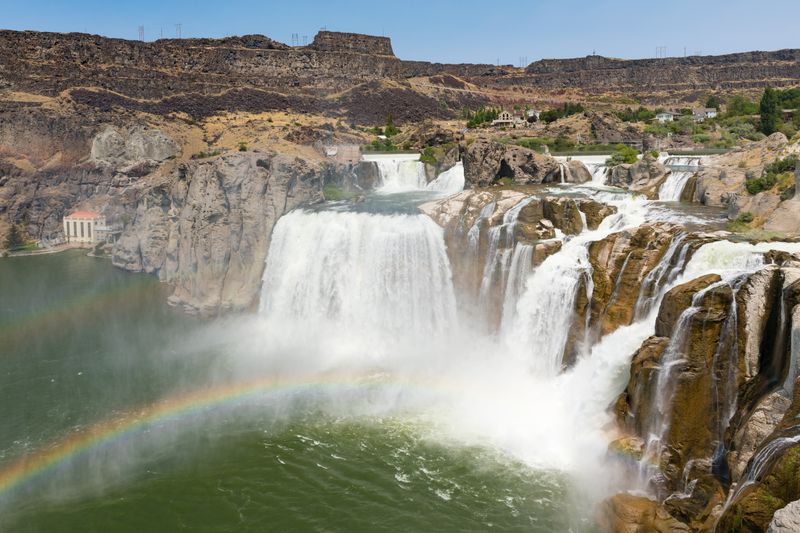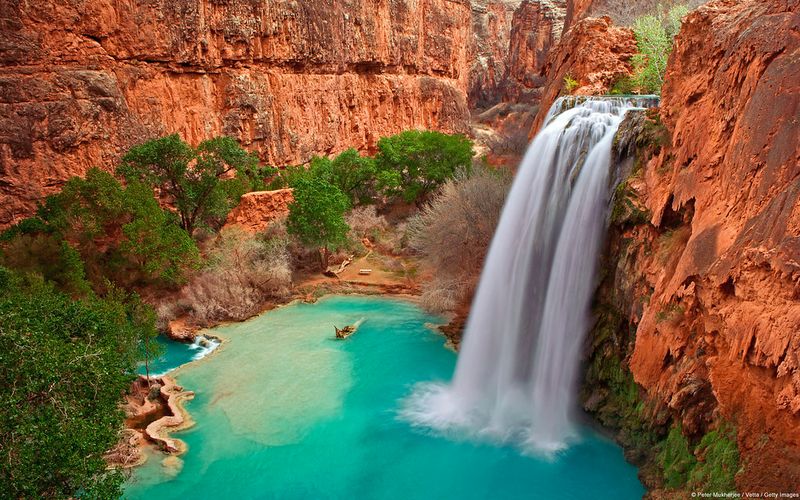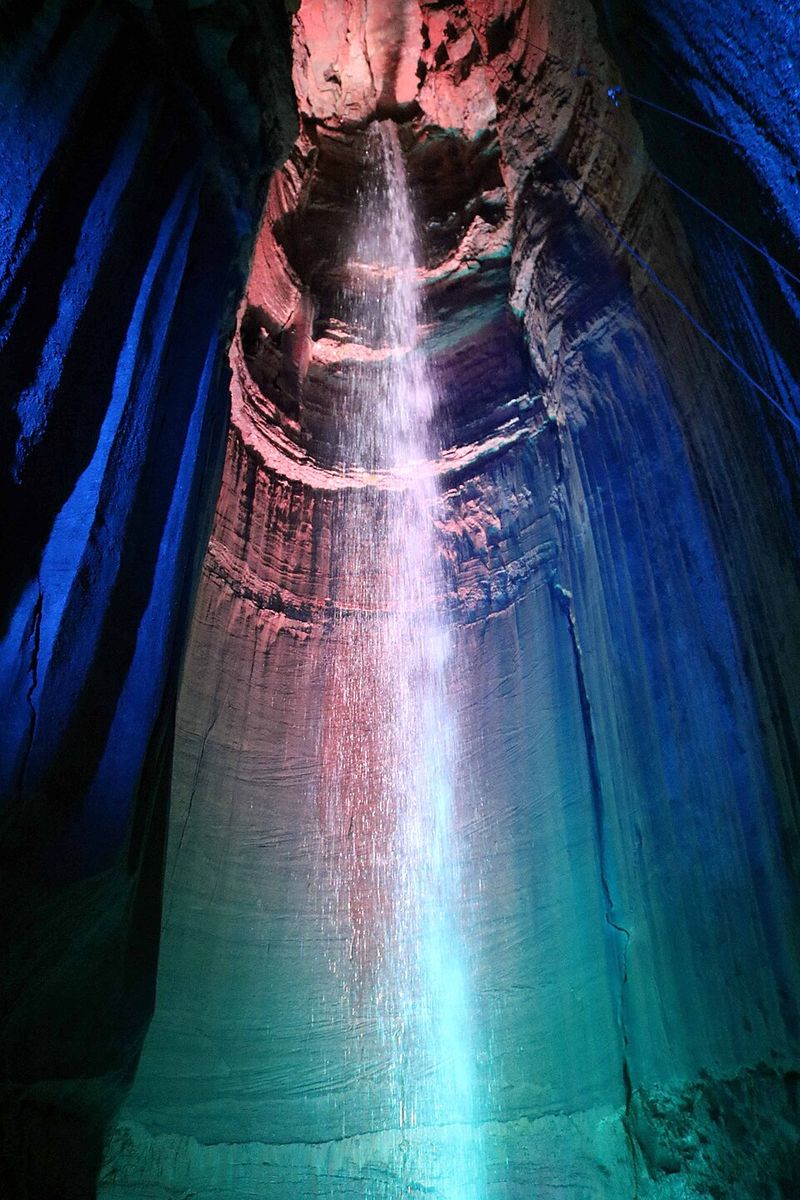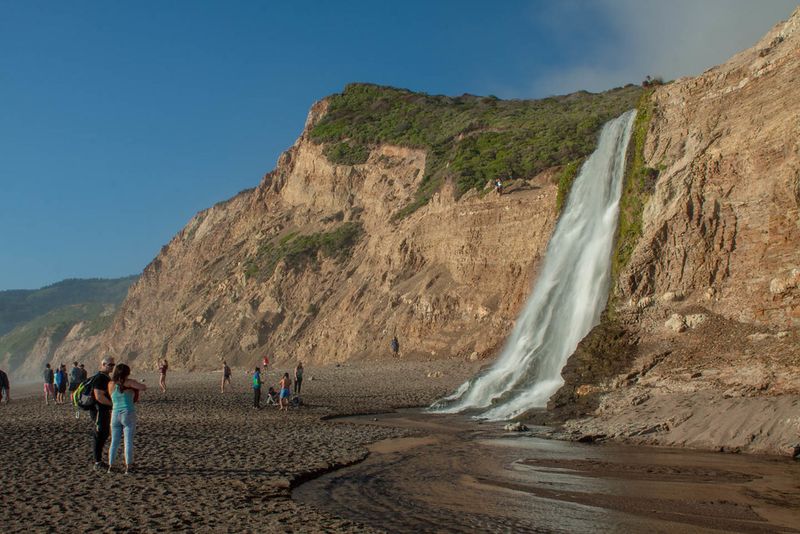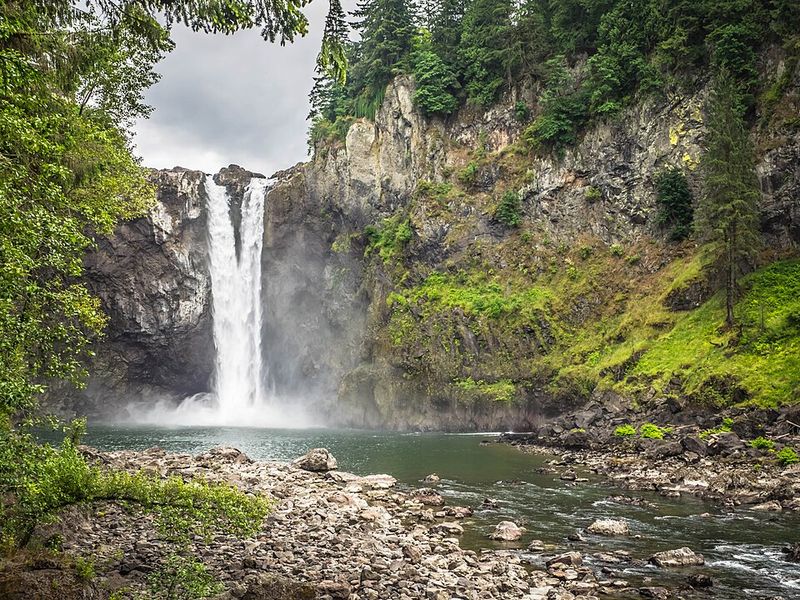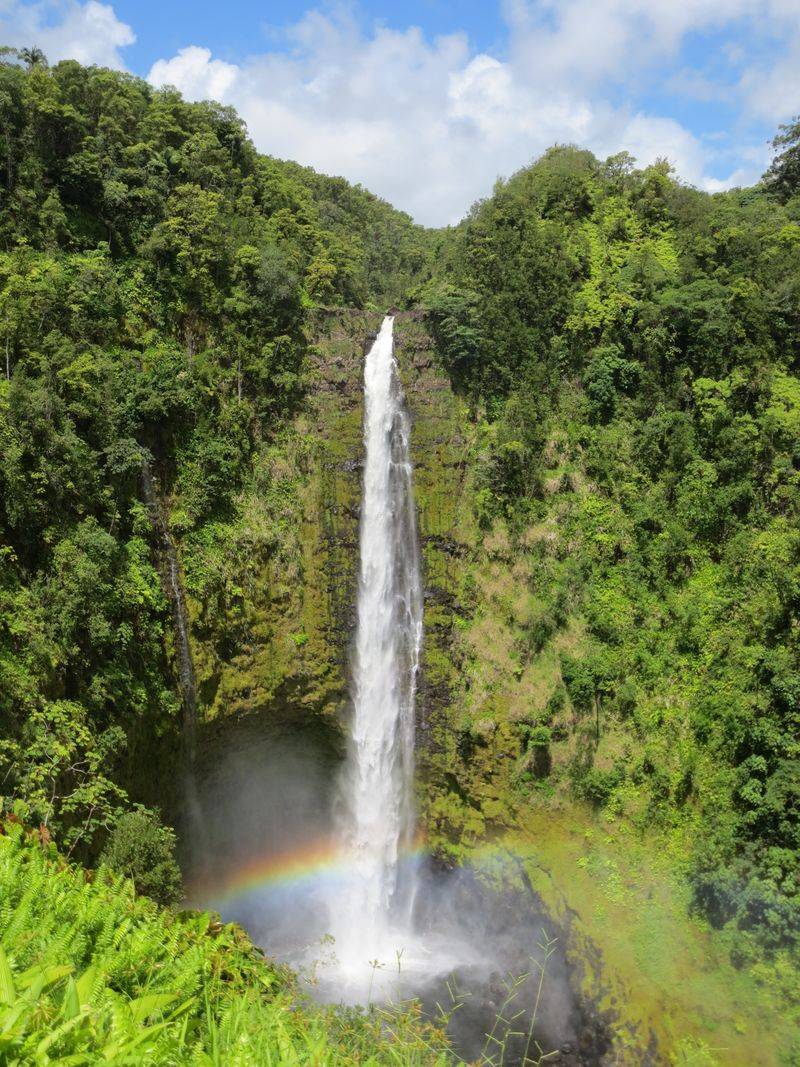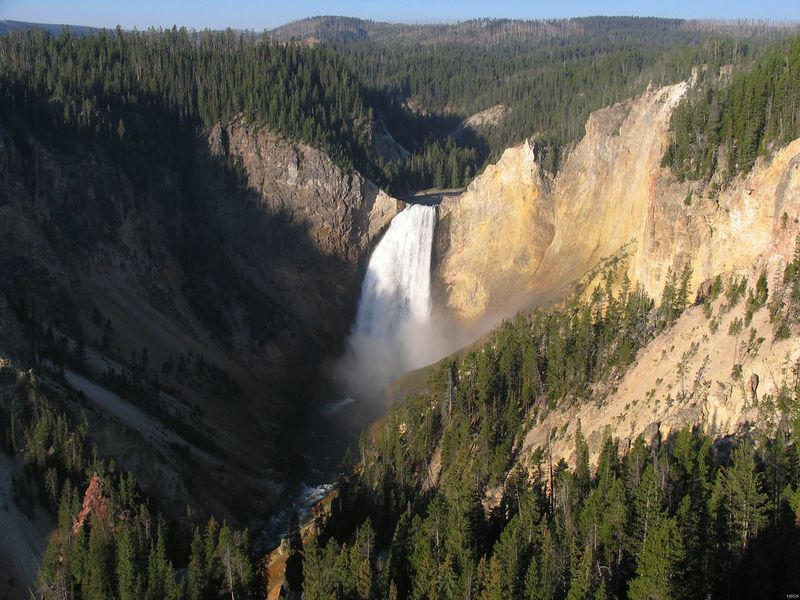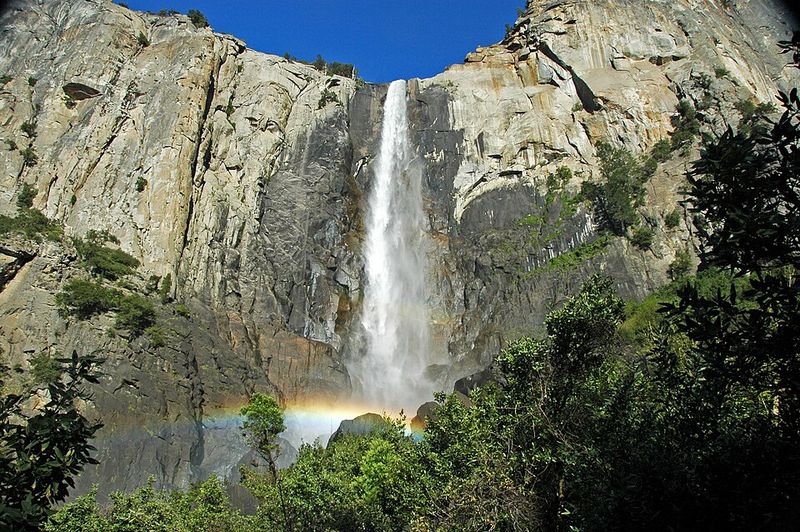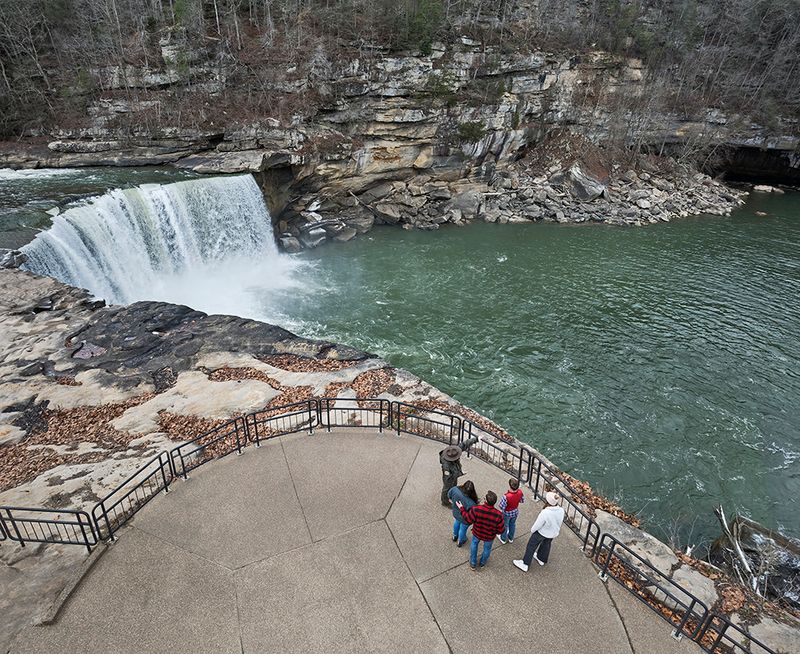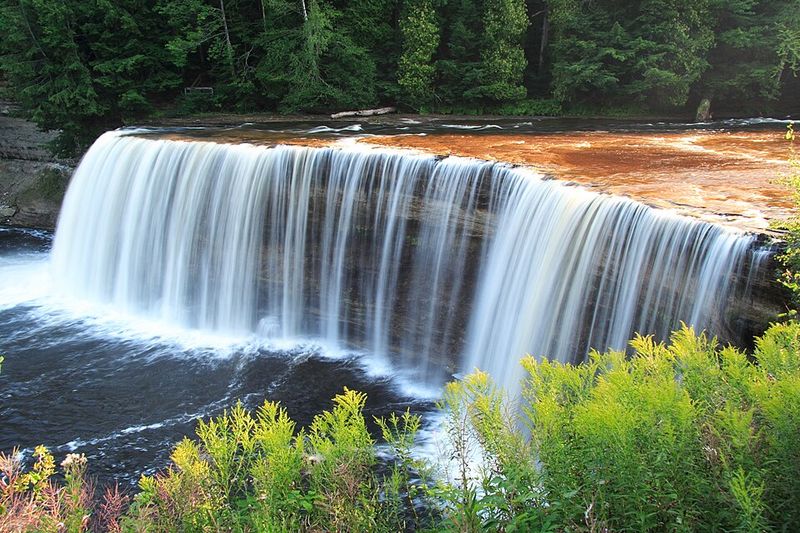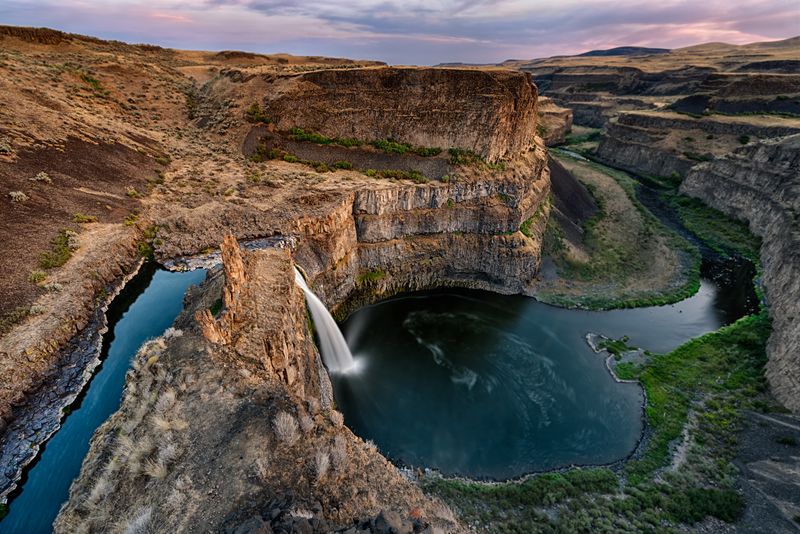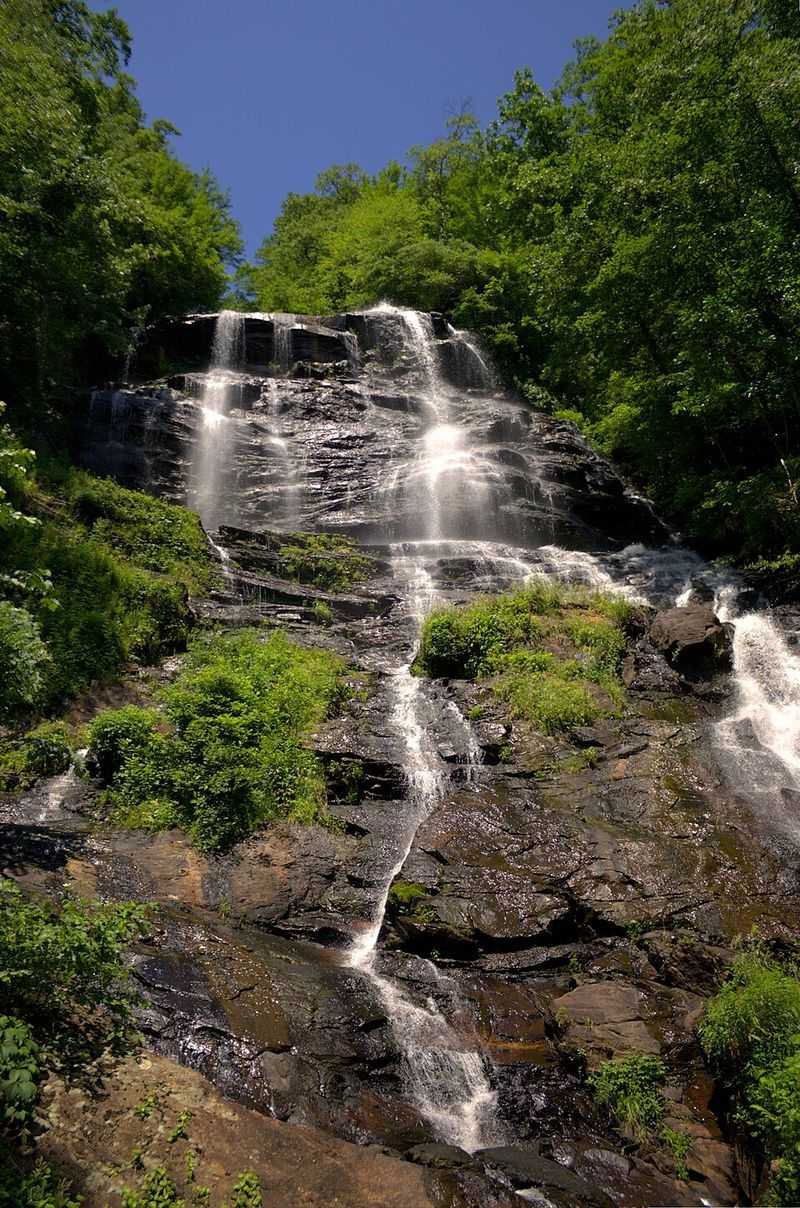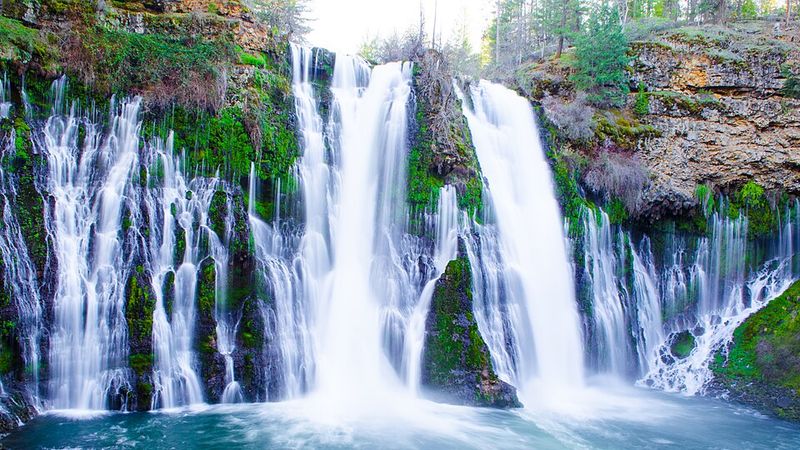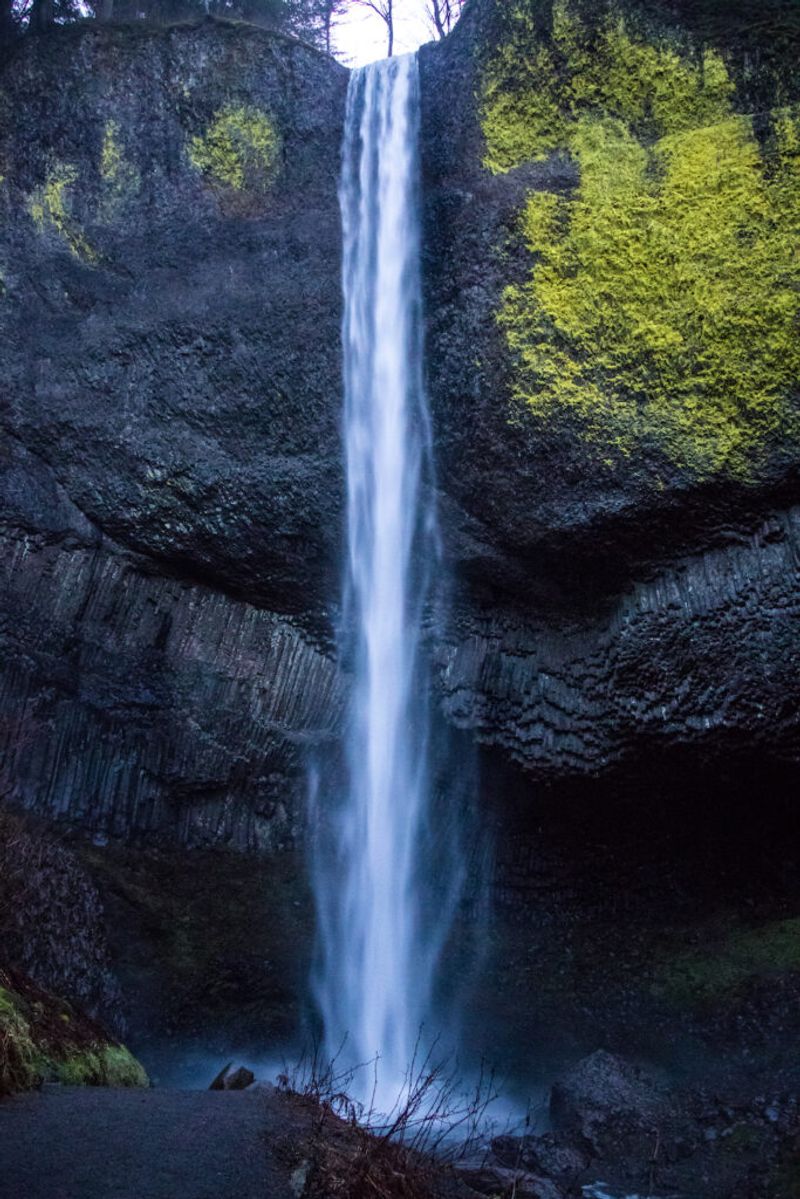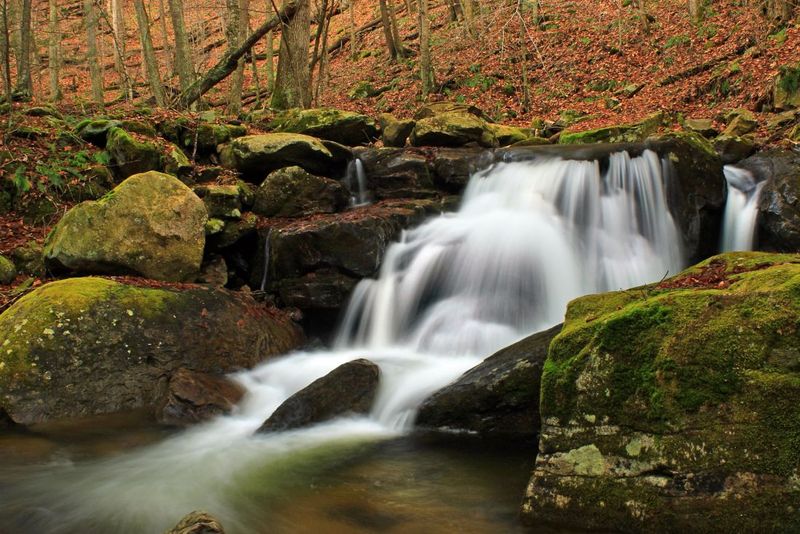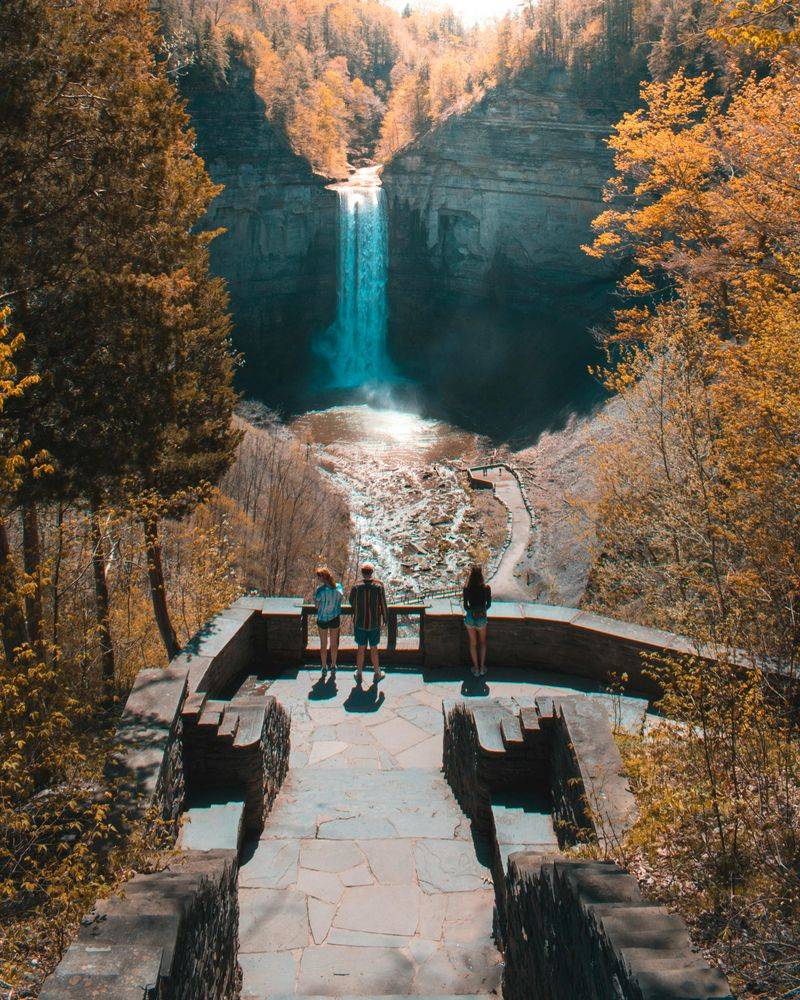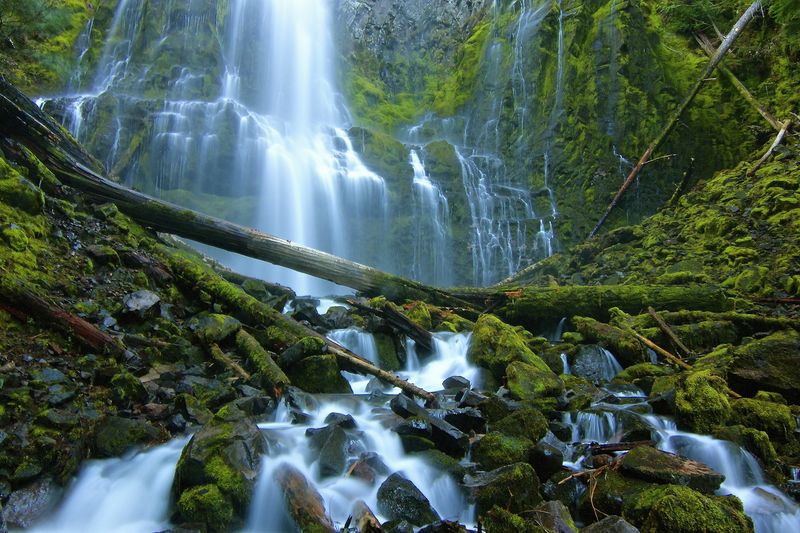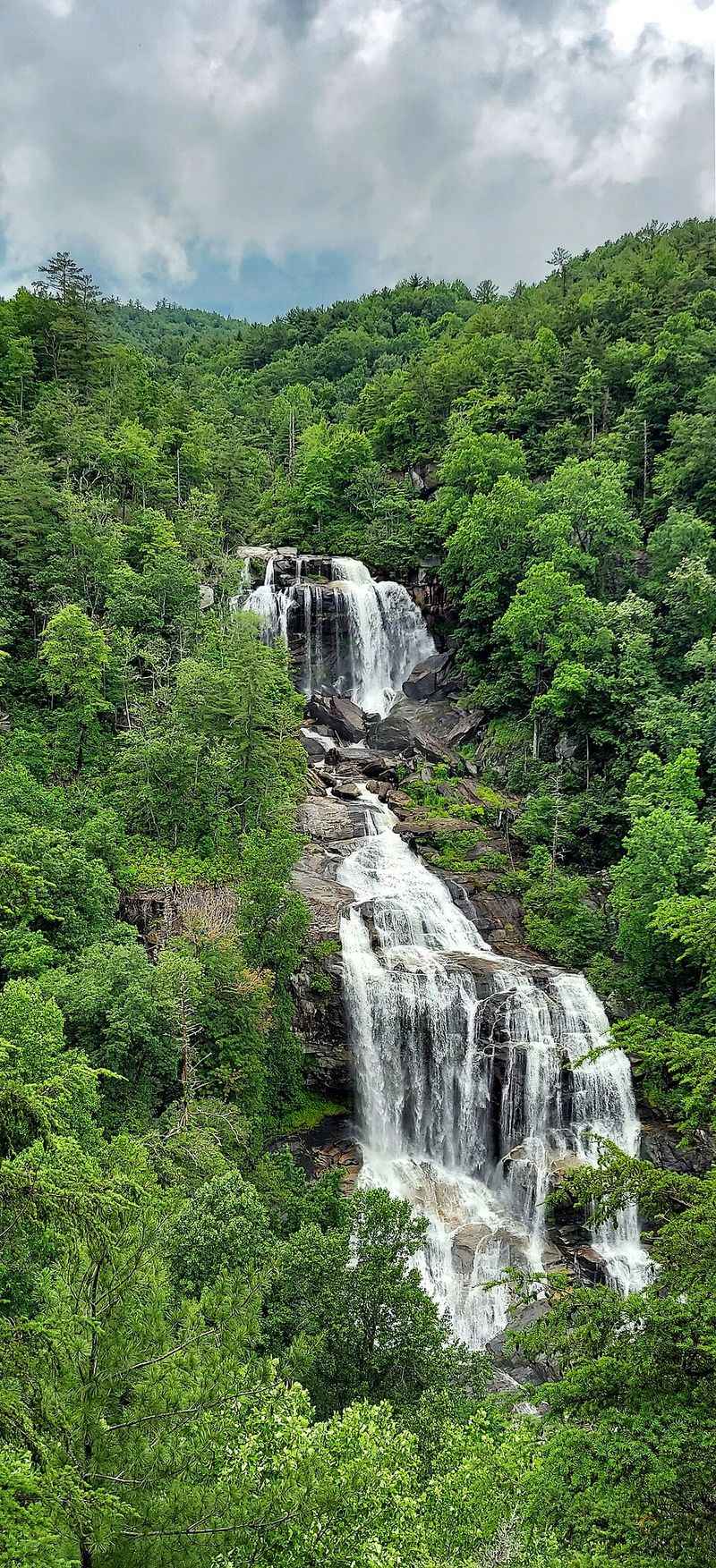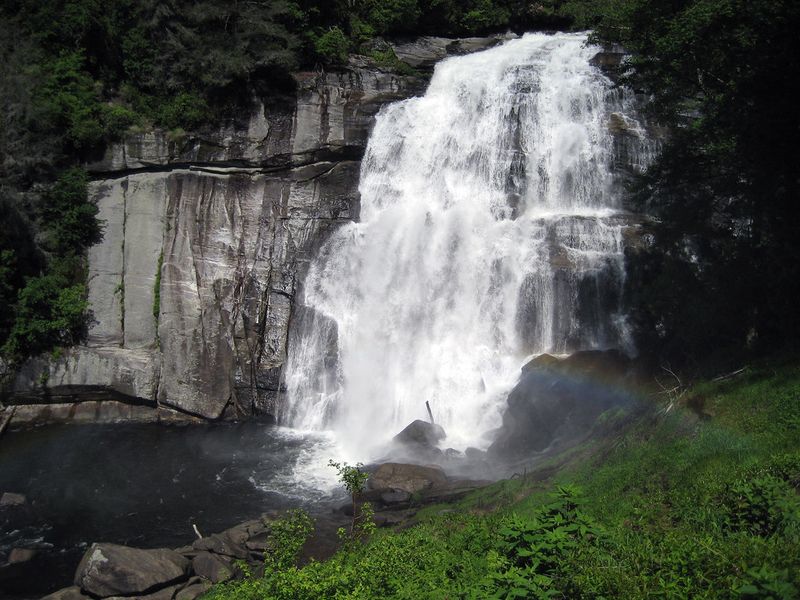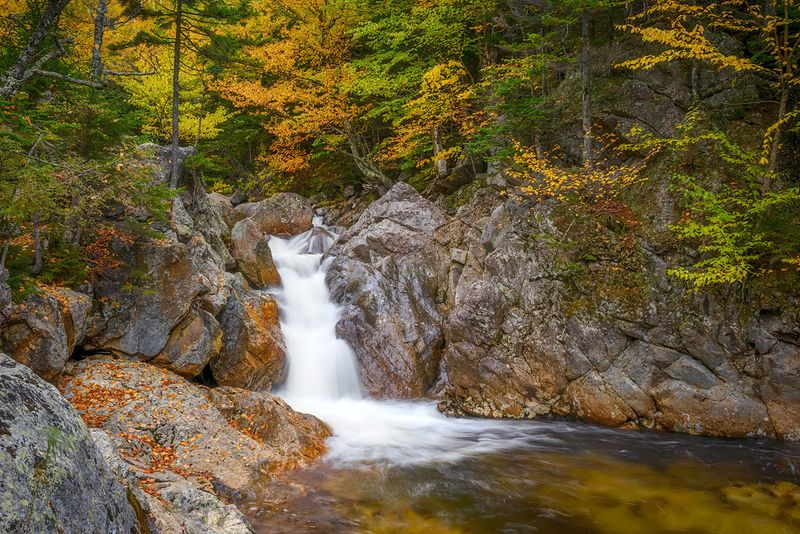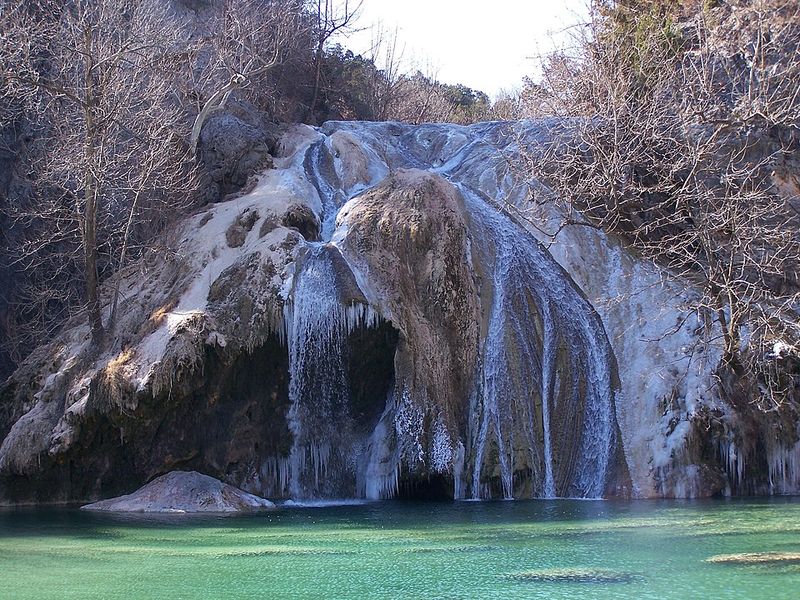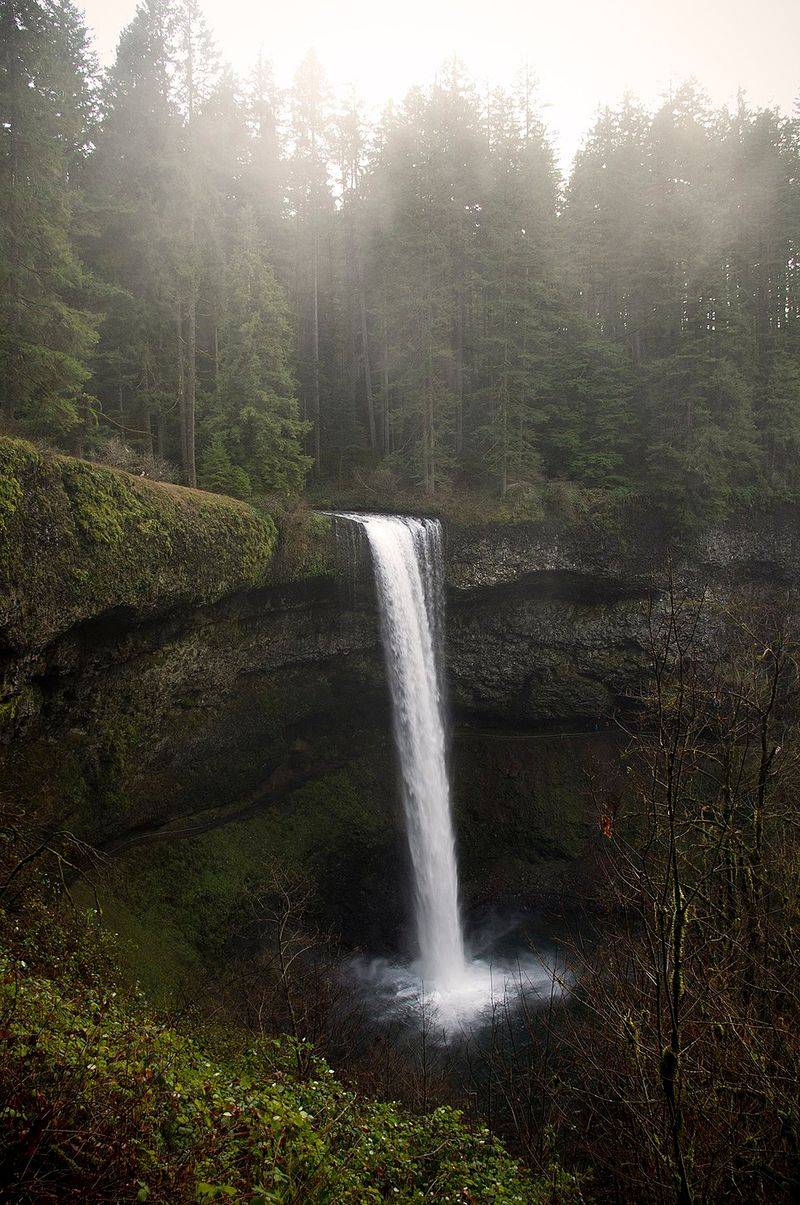Waterfalls are nature’s most dramatic displays of power and beauty. Across the United States, from towering cliffs in Yosemite to hidden cascades in the Appalachian Mountains, these natural wonders draw millions of visitors each year. Whether you’re seeking adventure, photography opportunities, or peaceful moments surrounded by mist and roaring water, America’s waterfalls offer unforgettable experiences that showcase the raw magnificence of our planet.
Yosemite Falls – California
Standing at an incredible 2,425 feet, Yosemite Falls claims the title of tallest waterfall in North America. The three-tiered cascade dominates Yosemite Valley with such force that its roar echoes through the granite canyon.
Late spring brings the most spectacular show when snowmelt from the High Sierra feeds the falls with tremendous volume. Water crashes down in three distinct sections: Upper Fall, the middle cascades, and Lower Fall. Each stage creates its own curtain of mist that catches sunlight in brilliant rainbows.
Visitors can experience the falls from multiple vantage points throughout the valley. A challenging trail leads to the top, rewarding hikers with breathtaking panoramic views of the entire park and surrounding wilderness.
Multnomah Falls – Oregon
Just a short drive east of Portland, Multnomah Falls tumbles 620 feet down a basalt cliff in two dramatic tiers. The iconic Benson Bridge spans the middle section, offering photographers one of the most recognizable waterfall views in America.
Moss-covered rocks and dense forest frame this year-round cascade, creating an almost mystical atmosphere. Even during summer when many waterfalls slow to a trickle, Multnomah maintains impressive flow thanks to underground springs and snowmelt from Mount Hood.
The easy paved trail to the bridge makes this waterfall accessible to visitors of all ages and abilities. For those seeking more adventure, the trail continues upward to a viewing platform at the top, providing stunning gorge vistas.
Niagara Falls – New York
Perhaps no waterfall on Earth matches Niagara’s sheer power and fame. Every single second, 3,160 tons of water thunder over the edge, creating a deafening roar and towering walls of mist visible for miles.
The American side offers intimate encounters with this natural wonder through boardwalks and observation decks. The Cave of the Winds tour brings visitors so close to the Bridal Veil Falls section that raincoats become essential equipment against the drenching spray.
While Niagara isn’t the tallest waterfall, its combination of height, width, and volume creates an unforgettable spectacle. Nighttime illuminations and seasonal fireworks add extra magic to an already extraordinary natural phenomenon that draws millions of visitors annually.
Shoshone Falls – Idaho
Nicknamed the “Niagara of the West,” Shoshone Falls stands 212 feet tall—actually taller than its famous eastern cousin. The Snake River plunges over a broad horseshoe-shaped rim, creating a thunderous display of raw natural power.
Spring viewing offers the most spectacular experience when winter snowmelt swells the river to maximum capacity. During peak flow, the falls span nearly 1,000 feet wide, rivaling Niagara in both scale and majesty. The desert canyon setting creates a striking contrast to the rushing water.
Summer months see reduced flow due to irrigation demands upstream, but the falls remain impressive. A well-maintained park surrounds the viewing areas, complete with picnic facilities and trails that showcase the dramatic Snake River Canyon landscape.
Havasu Falls – Arizona
Tucked deep within the Grand Canyon on Havasupai tribal land, Havasu Falls presents an almost surreal scene. Brilliant turquoise water—colored by high concentrations of calcium carbonate—contrasts dramatically against towering red sandstone walls.
Reaching this remote paradise requires dedication: a ten-mile hike through desert canyon terrain. Visitors must secure permits months in advance, as the tribe carefully limits access to protect this sacred site. The effort proves worthwhile when you first glimpse the 100-foot cascade spilling into impossibly blue pools.
The travertine formations surrounding the falls create natural terraces and swimming holes perfect for cooling off after the long hike. Many visitors camp overnight in the nearby campground, allowing time to explore neighboring waterfalls along Havasu Creek.
Ruby Falls – Tennessee
Hidden 1,120 feet beneath Lookout Mountain near Chattanooga, Ruby Falls holds the distinction of being America’s tallest underground waterfall. The 145-foot cascade plunges through a limestone cavern decorated with ancient stalactites and stalagmites.
Discovered in 1928 by Leo Lambert, the falls remain accessible only through guided tours that wind through narrow passages and impressive cave formations. Dramatic lighting illuminates the falling water in a spectacular display that seems almost otherworldly in the cavern’s darkness.
The constant 60-degree temperature inside makes Ruby Falls a perfect year-round destination. Tours last about an hour and include fascinating geology lessons about how water carved these underground chambers over millions of years, creating one of nature’s most unique hidden treasures.
Alamere Falls – California
Alamere Falls belongs to a rare category of waterfalls called “tidefalls”—cascades that plunge directly onto an ocean beach. Located in Point Reyes National Seashore, this 40-foot waterfall creates an extraordinary scene where freshwater meets saltwater against a backdrop of rugged California coastline.
Reaching Alamere requires a moderately challenging eight-mile round-trip hike along coastal bluffs and through coastal forests. The trail rewards hikers with stunning Pacific Ocean views before descending to the beach where the falls tumble over granite cliffs onto the sand.
Timing your visit for low tide provides the best viewing and photo opportunities. The falls flow strongest during winter and spring rainy seasons, though they maintain a beautiful trickle even during drier summer months when many California waterfalls disappear completely.
Snoqualmie Falls – Washington
Located just 45 minutes from Seattle, Snoqualmie Falls thunders 268 feet into a deep pool below, creating constant mist and rainbows. The Snoqualmie Tribe considers this powerful cascade a sacred site, calling it the place where First Woman and First Man were created.
Unlike many waterfalls that slow during summer, Snoqualmie maintains impressive year-round flow thanks to the Snoqualmie River’s consistent volume. The observation deck offers outstanding views from above, while a steep trail descends to the base for a more immersive experience in the spray zone.
The surrounding park includes a boardwalk, gift shop, and the historic Salish Lodge perched right at the falls’ edge. This easy accessibility makes Snoqualmie one of Washington’s most visited natural attractions, welcoming millions who come to witness its raw power.
Akaka Falls – Hawaii (Big Island)
Plunging 442 feet through dense tropical rainforest, Akaka Falls showcases Hawaii’s lush beauty. The waterfall appears almost impossibly tall as it drops in a single ribbon of white water, disappearing into a gorge thick with bamboo, ferns, and wild orchids.
An easy paved loop trail less than a mile long winds through the botanical wonderland of Akaka Falls State Park. Along the way, visitors encounter the smaller but equally beautiful 100-foot Kahuna Falls before reaching the main viewing platform overlooking Akaka’s dramatic drop.
The constant trade winds keep this area perpetually misty and green, ensuring the falls flow reliably year-round. Morning visits often provide the clearest views before afternoon clouds roll in, though the mystical atmosphere created by mist and filtered sunlight has its own magical appeal.
Lower Yellowstone Falls – Wyoming
Within Yellowstone National Park’s Grand Canyon, Lower Yellowstone Falls crashes 308 feet down yellow and orange canyon walls. The thunderous roar echoes through the gorge as the Yellowstone River plunges over volcanic rock stained brilliant colors by geothermal minerals.
Artist Thomas Moran’s 1872 paintings of this scene helped convince Congress to establish Yellowstone as America’s first national park. Today, Artist Point remains the most popular viewpoint, offering the same jaw-dropping perspective that inspired Moran’s masterpiece. The falls’ power creates a perpetual mist that catches light in spectacular rainbows.
Multiple viewing platforms along both canyon rims provide different perspectives of this geological wonder. Uncle Tom’s Trail descends via steep stairs to a platform near the falls’ base, where the sheer force becomes almost overwhelming.
Bridalveil Fall – California
Bridalveil Fall serves as Yosemite Valley’s welcoming committee, greeting visitors with a 620-foot cascade that seems to float down the granite cliff face. Strong winds often catch the falling water, creating a veil-like effect that inspired the waterfall’s romantic name.
The Ahwahneechee people called it Pohono, meaning “Spirit of the Puffing Wind,” believing an evil spirit lived in its mist. During spring runoff, the falls thunder with tremendous force, but even summer’s lighter flow maintains its ethereal beauty as breezes scatter the water into dancing veils of spray.
A short, easy trail leads to the base where you can stand within the falls’ spray zone. The constant mist creates lush vegetation around the viewing area, and rainbows frequently appear in the afternoon sunlight filtering through the water droplets.
Cumberland Falls – Kentucky
Called the “Niagara of the South,” Cumberland Falls stretches 125 feet wide and drops 68 feet over a sandstone ledge. But this Kentucky treasure’s real claim to fame is its rare “moonbow”—a nighttime rainbow visible only during full moons with clear skies.
Cumberland Falls is one of only two places in the Western Hemisphere where this phenomenon occurs regularly. The combination of the falls’ heavy mist and bright moonlight creates ghostly white arcs that seem almost magical. Thousands of visitors plan trips around full moon dates hoping to witness this extraordinary sight.
The surrounding state park offers multiple viewing platforms, hiking trails, and overnight accommodations. Even without the moonbow, Cumberland Falls impresses with its powerful flow through the forested gorge of the Cumberland River, especially after spring rains swell its volume.
Tahquamenon Falls – Michigan
In Michigan’s remote Upper Peninsula, Tahquamenon Falls flows with distinctive amber-colored water stained by tannins from upstream cedar swamps. The Upper Falls span nearly 200 feet wide and drop 50 feet, making them among the largest waterfalls east of the Mississippi River.
The golden-brown water creates an unusual and beautiful contrast against the surrounding green forest and white foam. During peak flow in spring, more than 50,000 gallons per second thunder over the falls, creating a roar that drowns out conversation even from the viewing platforms.
Four miles downstream, the Lower Falls offer a different experience with five smaller cascades that visitors can explore via a loop trail. The entire area remains wonderfully wild and undeveloped, preserving the rugged northern wilderness character that makes Michigan’s Upper Peninsula so special.
Palouse Falls – Washington
Tumbling 198 feet into a stark basalt canyon, Palouse Falls stands as Washington’s official state waterfall. The dramatic drop occurs in a remote corner of southeastern Washington where desert landscape dominates, creating an unexpected oasis of sound and spray in otherwise quiet terrain.
Ancient floods carved this canyon during the Ice Age, and the hexagonal basalt columns surrounding the falls tell the story of volcanic eruptions millions of years ago. The contrast between roaring water and silent desert makes Palouse Falls feel especially dramatic and isolated.
Spring brings peak flow when snowmelt from distant mountains feeds the Palouse River to maximum capacity. The state park offers camping and several viewpoints, including a platform right at the canyon rim where you can peer down into the churning pool below the falls.
Amicalola Falls – Georgia
At 729 feet, Amicalola Falls holds the title of tallest waterfall in Georgia and one of the highest in the entire eastern United States. The Cherokee name “Amicalola” means “tumbling waters,” perfectly describing how the cascade bounces down the mountainside in multiple tiers through Chattahoochee National Forest.
The falls mark the southern approach to the Appalachian Trail, and many through-hikers begin their 2,000-mile journey here. A challenging staircase with over 600 steps climbs alongside the falls, offering changing perspectives as you ascend. For those preferring easier access, a paved path leads to a bridge near the top.
The surrounding state park provides lodge accommodations, camping, and miles of hiking trails. Autumn transforms the forest into brilliant reds and golds, making fall one of the most popular times to visit this Appalachian gem.
Burney Falls – California
President Theodore Roosevelt called Burney Falls the “eighth wonder of the world,” and it’s easy to understand why. Unlike most waterfalls that depend on rainfall and snowmelt, Burney flows from underground springs at a constant 100 million gallons daily, creating a mesmerizing curtain of water that never stops.
The main cascade drops 129 feet, but what makes Burney truly special is how water also flows from the cliff face itself. Dozens of smaller streams pour through the volcanic rock, creating a shimmering veil effect that seems almost magical in morning and evening light.
A one-mile loop trail circles the falls, offering views from above and below. The constant mist supports lush vegetation and keeps the area cool even during hot summer days, making this a refreshing escape in California’s northeastern mountains.
Latourell Falls – Oregon
As one of the first major waterfalls along the Historic Columbia River Highway, Latourell Falls makes a stunning first impression. The 224-foot cascade drops in a perfectly straight column, framed by distinctive golden-yellow basalt cliffs covered in bright green moss and ferns.
A short paved trail leads from the parking area to the base, making this one of the gorge’s most accessible waterfalls. The viewing area sits close enough that you can feel the spray and hear the water’s percussion as it hits the pool below. Photographers particularly love how the colorful basalt creates natural framing for the white water.
Upper Latourell Falls, a smaller cascade upstream, can be reached via a steeper trail for those wanting to explore further. Both falls flow year-round, though spring brings the most dramatic volume and heaviest mist.
Fallingwater Falls – Pennsylvania
Not to be confused with Frank Lloyd Wright’s architectural masterpiece, this Fayette County waterfall near Ohiopyle State Park showcases Pennsylvania’s natural beauty. Multiple tiers of cascades tumble over ancient sandstone ledges, creating a series of emerald pools perfect for summer swimming.
The surrounding forest remains thick and wild, giving visitors a sense of discovering something hidden and special. Hemlocks and rhododendrons crowd the banks, and in autumn, the deciduous trees explode in brilliant reds and oranges that contrast beautifully with the dark green pools.
Hiking trails wind through the area, connecting to the larger Laurel Highlands trail system. Spring brings peak flow when snowmelt swells the creek, but even summer’s lower water levels reveal the beautiful rock formations and create inviting swimming holes that locals have enjoyed for generations.
Taughannock Falls – New York
In New York’s scenic Finger Lakes region, Taughannock Falls plunges 215 feet—33 feet higher than Niagara Falls. The waterfall drops in a single straight column into a spectacular natural amphitheater carved by glaciers and centuries of erosion through layered sedimentary rock.
Two trails offer different perspectives: a flat three-quarter-mile path leads to the base where you stand dwarfed by towering cliffs, while the rim trail provides aerial views of the gorge and surrounding Cayuga Lake landscape. The falls’ name comes from a Lenape chief who, according to legend, fought a battle here centuries ago.
Winter transforms Taughannock into an ice palace when freezing temperatures create massive ice columns and formations. Summer brings concerts to the park’s amphitheater, where the waterfall serves as a dramatic natural backdrop for performances under the stars.
Proxy Falls – Oregon
One of Oregon’s most photographed natural wonders, Proxy Falls drops 226 feet through an ancient moss-covered lava flow in the Cascade Mountains. The waterfall actually splits into upper and lower sections, both flowing over volcanic rock formations that create an otherworldly green landscape.
What makes Proxy especially unusual is that the water disappears into the porous lava rock at the base rather than forming a stream. The short loop trail through old-growth forest leads to viewing areas for both falls, passing through a landscape that feels almost prehistoric in its wild beauty.
The falls flow strongest during spring and early summer snowmelt, though they maintain beautiful flow through autumn. Winter snow closes the access road, making this a seasonal destination. The surrounding Three Sisters Wilderness offers additional hiking for those wanting to explore deeper into Oregon’s volcanic highlands.
Whitewater Falls – North Carolina
Claiming the title of tallest waterfall east of the Rocky Mountains, Whitewater Falls drops a combined 811 feet in multiple cascading tiers. Located in Nantahala National Forest near the South Carolina border, this powerful waterfall showcases the rugged beauty of the southern Appalachian Mountains.
The upper falls drop 411 feet and are easily viewed from a paved overlook just a short walk from the parking area. For more adventurous visitors, a steep trail descends to the lower falls, though the path is strenuous and requires caution on the rocky terrain.
Spring brings maximum flow when winter rain and snowmelt swell the Whitewater River to impressive volumes. The surrounding forest provides spectacular fall color, making autumn another popular season. The observation deck offers panoramic views across the gorge to distant mountain ridges stretching toward the horizon.
Rainbow Falls – North Carolina
Near the mountain town of Sapphire, Rainbow Falls thunders 150 feet through Pisgah National Forest, earning its name from the vibrant rainbows that frequently appear in its heavy spray. The combination of height, volume, and sunlight creates ideal conditions for these colorful arcs, especially during afternoon hours.
The waterfall requires a moderately challenging hike through beautiful hardwood forest, passing smaller cascades along the way. The trail becomes rocky and steep near the falls, but the payoff is worth the effort. During peak flow, the roar is deafening and the mist drenches everything within fifty feet.
Local legend claims the Cherokee believed spirits lived behind the falls, and it’s easy to imagine why. The power and beauty of Rainbow Falls, combined with its somewhat remote location, create an atmosphere of wild majesty that has remained unchanged for thousands of years.
Glen Ellis Falls – New Hampshire
In New Hampshire’s White Mountains, Glen Ellis Falls plunges 64 feet into a narrow granite gorge, creating one of New England’s most photogenic scenes. The waterfall is easily accessible via a short trail from Route 16, making it a popular stop for travelers exploring the Mount Washington area.
A tunnel passes under the highway, leading to a boardwalk and viewing platform positioned perfectly for photography. The granite walls of the gorge frame the falls beautifully, and the surrounding forest puts on a spectacular show each autumn when maples and birches turn brilliant shades of red, orange, and gold.
The Ellis River flows year-round, but spring brings the most dramatic display when snowmelt from the surrounding peaks swells the flow to maximum power. Even in winter, the partially frozen falls create stunning ice formations that attract photographers willing to brave the cold.
Turner Falls – Oklahoma
As Oklahoma’s tallest waterfall, Turner Falls drops 77 feet into a natural swimming hole that has been a beloved summer destination for generations. Located in the scenic Arbuckle Mountains, the falls flow through Honey Creek, creating a refreshing oasis in Oklahoma’s often hot and dry landscape.
The surrounding park offers more than just waterfall viewing—caves, hiking trails, and swimming areas make this a full-day destination. The clear, cool water in the natural pools below the falls provides perfect relief during summer heat, and the limestone formations create interesting geological features throughout the area.
Named after Mazeppa Thomas Turner, a farmer who settled here in the 1870s, the falls have been welcoming visitors for over a century. Spring brings peak flow, but the waterfall maintains enough volume for swimming through most of summer, making it Oklahoma’s most popular natural attraction.
Silver Falls – Oregon
At the heart of Silver Falls State Park lies the Trail of Ten Falls, Oregon’s crown jewel for waterfall enthusiasts. The star attraction is South Falls, a 177-foot cascade where hikers can actually walk behind the falling water through a natural cavern carved into the basalt cliff face.
The eight-mile loop trail passes ten major waterfalls ranging from 27 to 177 feet tall, making this one of the most waterfall-dense hikes in America. Each cascade has its own character—some drop in straight columns, others bounce down rocky staircases, and several allow behind-the-falls access through amphitheater-like spaces.
The lush Pacific Northwest forest surrounding the falls remains green year-round, though spring brings maximum flow and autumn adds brilliant color. This magical landscape feels almost enchanted, with moss-covered rocks, towering Douglas firs, and constant mist creating an atmosphere straight from a fairy tale.
